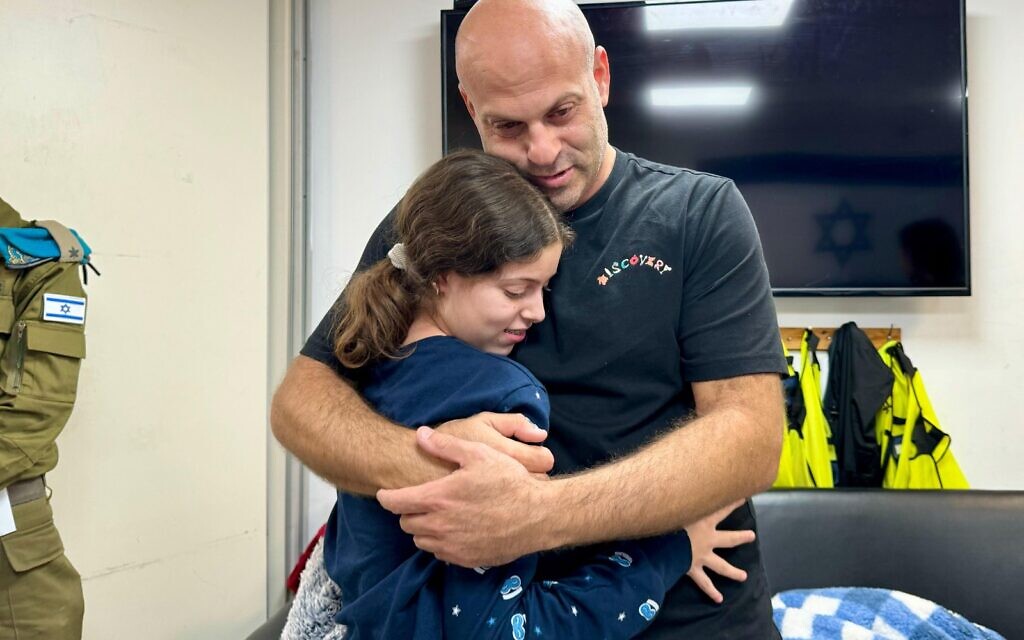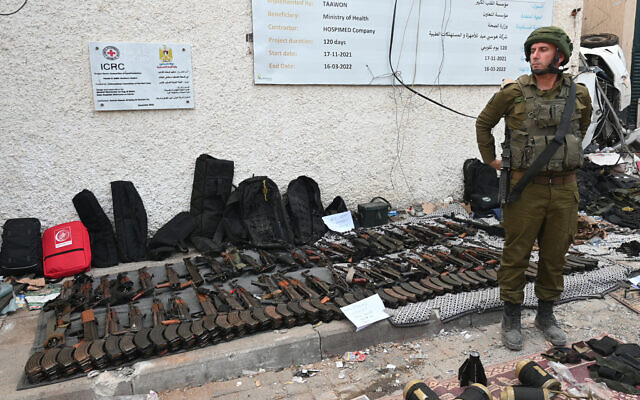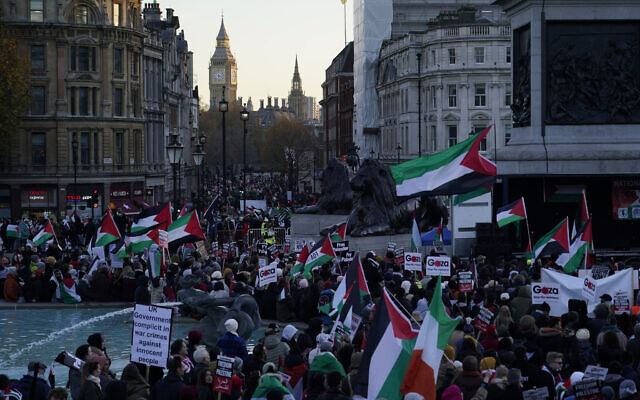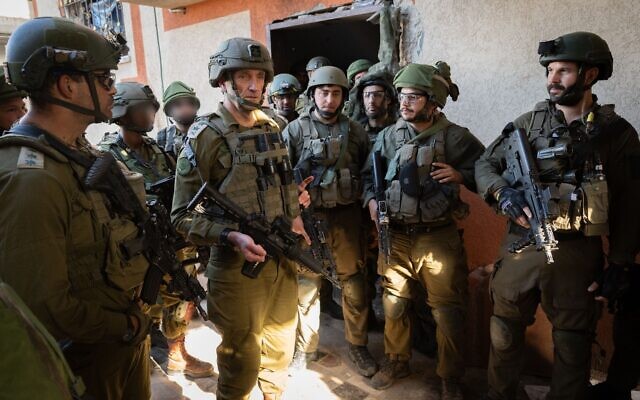"Hamas is widely expected to seek to string out the current pause in fighting, under a four-day deal for 50 hostages that can be extended an extra day for every 10 more hostages that it releases. The longer the pause, the more complicated for the IDF to resume the ground offensive — especially if Hamas can encourage and force large numbers of northern Gazan evacuees to return to that part of the war zone — and the greater the international pressure for a full ceasefire."
Hamas’s hostage manipulations show how much control it continues to hold over Gaza
The amoral, barbaric terror-government plays cynical games with the families, with Israel, and even forces Biden to get involved. Of course it does. And it must be dismantled

Not halfway done
For now, it would seem, seven weeks into the Israeli effort to tear it apart, Hamas seems to be holding together quite effectively. The best estimate is that perhaps 4,000-5,000 of its gunmen are dead; that leaves another 20,000-25,000 who are not.
Israel controls much of northern Gaza, and has destroyed much of Hamas’s infrastructure there, but most of the Hamas tunnel network in the north may well still be intact. According to former generals including Amos Yadlin, Yisrael Ziv and Giora Eiland, the ground operation is certainly not even half-completed, with central and southern Gaza yet to be tackled, notably including Hamas strongholds such as Khan Younis. And the logistics of fighting in southern Gaza, now unprecedentedly populated with its own residents and hundreds of thousands of evacuees from the north, will present immense challenges to the IDF, even as almost all of the international community steps up pressure for a permanent ceasefire.
Yahya Sinwar, the presumed orchestrator of both October 7 and Hamas’s viciously cynical self-preservation tactics since — including the sacrifice of any and all Gazan noncombatants to the cause of his Jew-killing, Israel-destroying, Islamist death cult — would appear to remain in highly effective control of much of the Strip. And if it’s not him, then it’s others in the leadership.
Since the truce went into effect, and as of this writing, it has been near-impeccably maintained — by Hamas and every other terrorist outfit in the Strip — belying widely cited assessments in Israel that Hamas might prove unable to impose the halt in fighting on all the armed Israel-haters in Gaza.
Saturday night’s grim theatrics also suggested a leadership managing events, pushing psychological terror to the limits, and knowing when to climb down.
And the mechanics of the deal itself show tactical and strategic cunning. There is an emphasis on fuel entering the Strip — fuel that Israel knows will be subverted for the Hamas war machine — as part of a wider humanitarian aid influx that the US has been pressuring Israel to allow throughout the war.
Meanwhile, the daily releases of West Bank and East Jerusalem Palestinian security prisoners — albeit not convicted murderers, but many would-be murderers, several of them notorious figures — have seen scenes of celebration that point to rising popularity for Hamas, at the expense of the Palestinian Authority, as the liberator of freedom fighters.

Unfathomably, unconscionably and catastrophically surprised by Hamas on October 7, the IDF says it has held the upper hand in every confrontation with the terrorist army since the ground operation began, and appears to have anticipated at least some of Hamas’s planned deadly surprises.
Troops have been astounded by the sheer quantity of deadly weaponry used and prepared for use against them — the endless rows of booby-trapped homes, the huge quantities of anti-tank rockets, the vast tunnel network — but they have tackled it resolutely.
The ruins left behind as they have proceeded through the north of the Strip will take years to rebuild, the IDF acknowledges. Given the high stakes — the imperative to dismantle a terrorist army that fully intends to regroup and massacre Israelis again and again if allowed to — the military is ordering airstrikes in circumstances it would not have done in the past, with consequent noncombatant casualties, while insisting it is acting within the laws of war and the framework of proportionality.
Back to the war
Hamas is widely expected to seek to string out the current pause in fighting, under a four-day deal for 50 hostages that can be extended an extra day for every 10 more hostages that it releases. The longer the pause, the more complicated for the IDF to resume the ground offensive — especially if Hamas can encourage and force large numbers of northern Gazan evacuees to return to that part of the war zone — and the greater the international pressure for a full ceasefire.

Israelis are not united behind Prime Minister Benjamin Netanyahu, but they are near universally supportive of the war’s mission to dismantle Hamas and get back the hostages. That certainly remains the plan: As IDF Chief of Staff Herzi Halevi said on Saturday, “We will return immediately, at the end of the ceasefire, to attacking Gaza, to maneuver in Gaza. We will do it to dismantle Hamas and also to create great pressure to return as quickly as possible and as many hostages as possible, down to the last one of them… We have an obligation to fight and also to risk our lives so that [Israeli citizens] can return to live in safety.”
To put it in the starkest terms, Israelis know this country has no future if the fighting ends with Hamas still a threat, Sinwar still standing, Hezbollah laughing from across the northern border with 10 times the military muscle, and Iran arming, training and inspiring its proxies while proceeding toward the bomb.

“Dismantling” Hamas, to Halevi, is understood to include neutralizing as many of those gunmen as possible, neutralizing Hamas’s commanders, and destroying Hamas’s weaponry, control systems and infrastructure. It is no small task, and even if achieved, is not the end of the challenge.
Support for the antisemitic, anti-infidel ideology predates Israel, and will not be destroyed even if Hamas is defanged as a fighting force. But a post-war Gaza would be one in which terror groups do not rule and cannot rearm — as Hamas was able to do these past years with truckloads of weapons from across the Egyptian border — and in which those many regional players who detest Hamas and fear Iran should be encouraged to play a role.
But that’s getting ahead of ourselves. Right now, there’s a lull in fighting that Hamas is determined to exploit. An Israel yearning for its hostages to be home — with the families whose loved ones have not been freed, and may not be for a long time, showing astounding nobility and solidarity. International pressure for a permanent ceasefire. A wide, essential determination in Israel to ensure the campaign indeed demolishes Hamas. And a key figure, amid pressures of his own, providing moral clarity and support.
In his remarks on Friday, Biden said he saw a “real chance” that the current pause could be extended — not into a long-term ceasefire but to enable more hostages to be released. He was explicit in supporting Israel’s effort, under Netanyahu, to destroy Hamas: “I’ve encouraged the prime minister to focus on trying to reduce the number of casualties while he is attempting to eliminate Hamas, which is a legitimate objective he has,” said the president. “That’s a difficult task, and I don’t know how long it will take.”



1 comment:
Even better, Canadian PM advised Bibi to use "maximum restraint" which means using megaphones instead of rifles, we guess
Post a Comment